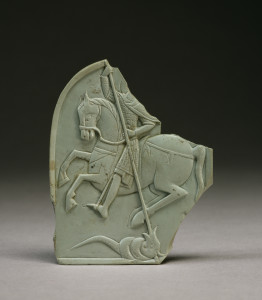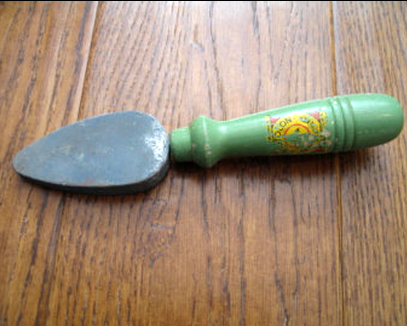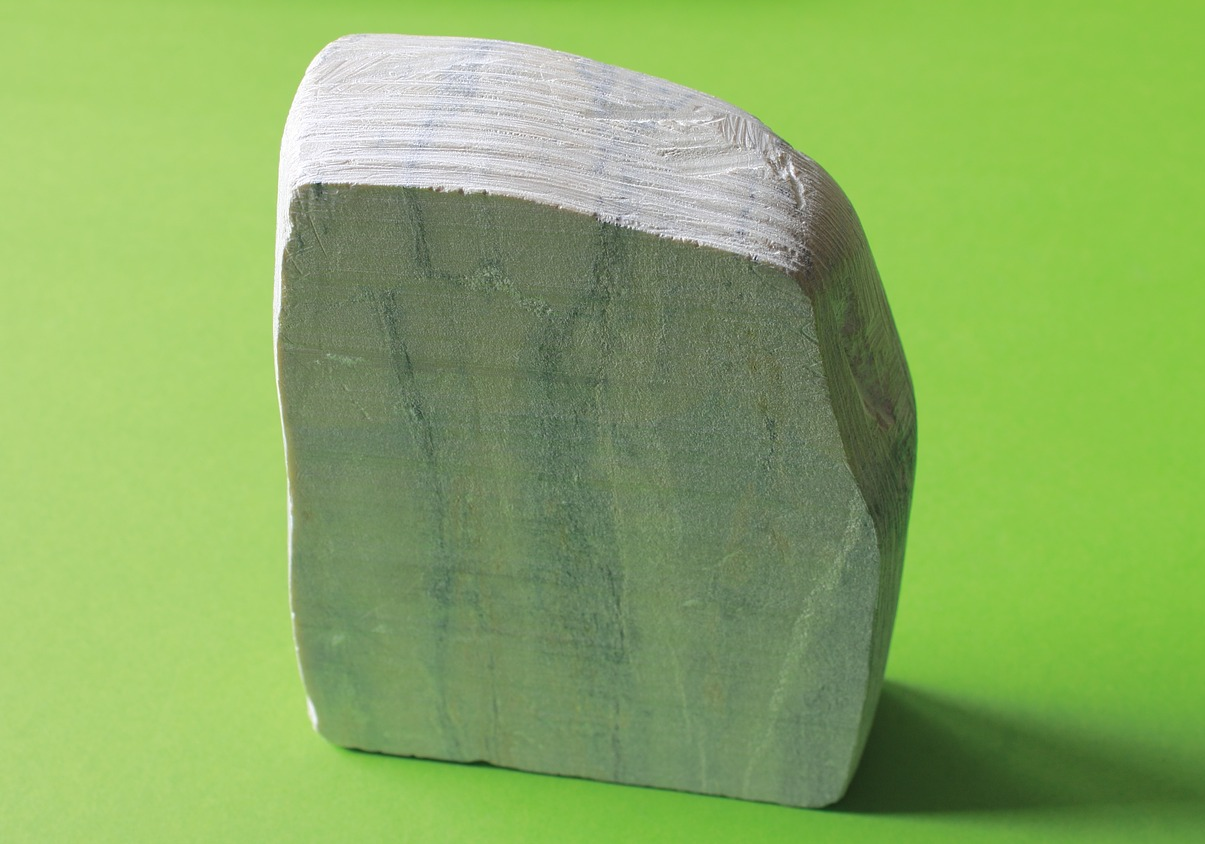
Most rocks are rough to the touch. Some are smooth. Asbestos is stringy. Sulfur is brittle. One very interesting rock variety is soapstone. It is called smooth and slippery. What makes soapstone slippery?
I was raised in the North then moved to the South to where soapstone is is mined, Nelson County, Virginia. I take special interest in the stuff. As a young child, I watched spellbound as my father took a handheld soapstone and used it to sharpen our enormous carving knife.
General Rock Types
As kids we were taught there are three types of rock, sedimentary, igneous, and metamorphic rock.
Sedimentary rock forms from mineral and organic materials near at earth’s surface. These deposits form rock deposits over a period of time. Most notable is sandstone.

Igneous rock solidified from the molten state. Lava is the premier example of igneous rock, though there are others, including granite, gabbro, and peridotite.
Metamorphic rock, we were taught, is rock that has changed its characteristics over a lengthy time exposure to heat and pressure. Soapstone is one example of metamorphic rock.
Specifics
Soapstone is formally known as steatite. Steatite is—chemically—magnesium silicate. One primary form this substance takes is the mineral talc. Talc is quite soft (1 on the Mohs scale) and is responsible for the soapstone’s slippery feel. Soapstone is the heart of Schuyler (pronounced Sky-ler), Virginia.
Schuyler soapstone is very dense and close-grained. Being heavy and slippery, it can be put to a variety of functional and ornamental uses. See the reference, below, for further information.
Why is Soapstone Slippery?

Talc possesses the chemical formula Mg₃Si₄O₁₀(OH)₂. Spelled out, it contains 3 atoms of magnesium, 4 atoms of silicon, 12 atoms of oxygen, and 2 atoms of hydrogen. Ground talc was commonly used to coat the bottoms of babies before putting them in cloth diapers. Due to possible health issues, this use has greatly diminished.
But what causes talc to be smooth? As for graphite, talc takes the form of layers or sheets. These layers separate easily due to weak bonding between them. This is called shear strength. This quality makes graphite and talc excellent choices for solid lubricants.
What puts the ‘soap’ in soapstone? Talc allows the skin to move across the stone without inducing vibrations in the skin. The lack of vibration results in no stimulation of our vibration sensor cells. Our brain tells us talc possesses soapy smoothness.
Note: You might also enjoy Tongue Stuck to a Silver Spoon Eating Ice Cream?
References:

I have held soapstone and marvelled at how it feels. It truly does feel soapy. I have also touched asbestos before they were forced to acknowledge how dangerous it is. It used to be used as the “rest” on ironing boards, for laying the hot iron on while you arranged the item to be smoothed.